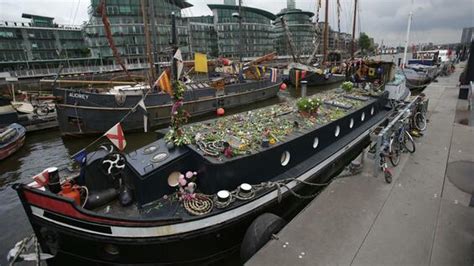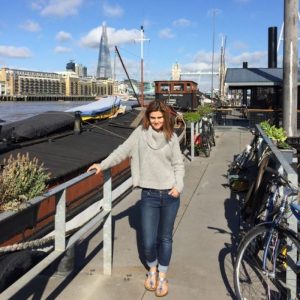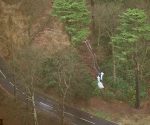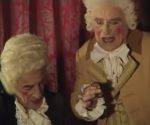Jo Cox Incident Periphery; Part Three: Batley & Spen by-election special; the difference between Jo Cox and Helen Leadbeater
On 1st July there is to be a by-election in the Batley and Spen Parliamentary constituency. It was in Birstall, located in this constituency, of course, where the UK Government mounted its 16th June, 2016, operation to affect the result of the referendum on EU membership, to take place a week later, by staging the (apparent?) murder of a pro-EU MP who, by being a so-called “rising star” in the Labour Party and indeed British politics, would allow the incident to take on the most tragic of proportions – to the detriment, it must have been hoped, to the “Leave” vote. In truth, Jo Cox had too meteorically emerged from, and was saturated with the murk of whatever activity the cover of overseas development provides for the implementation of UK Government’s foreign policy. Thus, what with the incident appearing to be an “exercise gone live” (which is explained in FBEL’s full coverage of it), and Cox potentially appearing to have been placed to be the sacrifice in it, what happened, apart from anything else that UK Government would exploit the event for, was the beginning of a period in which the people of Batley and Spen in particular would be taken for mugs.
Since Cox, Batley and Spen could be described as a fiefdom for a clique that benefits from the feelings in an electorate created by the apparent murder of their MP. If the arrangement is the best way for UK Government to have the lid kept on a big lie, who knows – what can be said is that there’s an effort to have the Cox affiliation consolidated, along with the power to psychologically manipulate which the Cox legend gives, with the emergence of Kim Leadbeater, Cox’s sister, as the Labour Party candidate in the by-election.
So, while the by-election is being touted as being a test of Keir Starmer’s leadership, and a challenge for the so-called Tory “blue wall”, the real issue at the Batley and Spens by-election will be whether or not the people who live in the constituency want to continue to substantiate a vast psyop by providing front to the election of a Parliamentarian – and the hue doesn’t matter – who can arrive in Westminster with Cox’s baggage (which is what being the MP for Batley and Spen bestows on the holder of the title) as the epitome of one licensed to characterise anti-globalists as “far-right” terrorists and, with that dehumanisation in place, to reduce legitimate anti-globalist, consensus defying positions to dangerous notions that must even be criminalised.
Of course, there is another thread of political intrigue at work in the Batley and Spen by-election, and this is its use as a glorified opinion poll. This is according to the author’s theory that by-elections are engineered to take place in order to obtain a realistic measure of public political mood, but more importantly to create perception of political success or failure belonging to a target party. So, at the moment, because the Tory executive is so mired by its economic blockade, and because the execution of UK Government agenda is paramount, with the job given to the people most likely to deliver it within the political context of the day, there will be a requirement (of UK Government’s) to have the country elect Keir Starmer as Prime Minister at the next general election. Vital to this is the perception of Labour success, and another reason for Kim Leadbeater, who on paper must be a shoo-in, standing as the party’s candidate. Tracy Brabin, who had been the incumbent (and of the Cox klatch) who succeeded Cox by being handed the seat in an essentially uncontested by-election, also just walked into the newly created “Mayor of West Yorkshire” non-job, and thus created the space for the contest under discussion.
This article, and ones to be written before July in the continuation of this series, will be another FBEL production to aid in establishing a crucial understanding as to why people must not participate in elections. Because of the timing, and current events, of course, this part of the series is particularly aimed at Batley and Spen in respect of how the people living there have been, and are being specifically exploited. Although Leadbeater is the obvious bearer of the Cox torch, whatever colour of politician is elected, the same power will be given to the psyop – unless, of course, people don’t participate, and don’t participate in such numbers that the new MP can be accused of having no legitimacy, and it can be said that, actually, Batley and Spen collectively does not delegate its sovereignty, and thus sees no value in having an MP. This would certainly crush the notion of the hallowed MP, the crusader against the backwoods, where defiance can literally be associated with the death of a sacrificed maiden in distress. In fact, it appears as if UK Government is aware of a risk of this happening, and in what can only be an effort to boost turnout, the George Galloway character has been brought in as an independent candidate as a vote creating gimmick.
Turning now to the work at hand, we are going to begin at the beginning, and look at something very fundamental.
Touted as a local girl making it good when she stood as a prospective Labour candidate for Batley and Spen in the 2015 general election, she had actually been nothing of the sort since her recruitment into Cambridge. We’re going to see when we look at how she was advanced through the selection process, that the best that the local press could say about her credentials was that she was “Batley-born”, and “brought up in Heckmondwicke”.
Cox graduated from Cambridge straight into a job as an advisor for the Labour MP for Stoke North, and then directly became an assistant to Glenys Kinnock. For 8 years, terminating (interestingly) in 2009 – the same year of her supposed marriage – she worked for Oxfam in a role that took her to New York as “head of Oxfam international humanitarian campaigns” – so she was in the heartland of the Responsibility to Protect doctrine not long after its manifestation as new international “rule of law”, to be used in future as a justification for the US and UK’s soon to be coming joint overseas military ventures in Libya and Syria. This is why it was said of Cox that she came from the murk of the general area of overseas development – the front for interfering at grass roots in a country to further the Anglo-globalist cause. It’s not an accident that the GoFundMe campaign that was set up on Cox’s death raised money for the White Helmets – al-Qaeda with mobile phones and internet connections (David Cameron’s non-lethal assistance) for beaming faked atrocities supposedly by the Syrian Government straight into living rooms of North America and Britain, and elsewhere. Before her alleged marriage to Brendan Cox, who was also with Oxfam, but with a full career history as dodgy as his “wife’s”, including being at one time an adviser to Gordon Brown, Cox advised the Prime Minister’s wife, Sarah Brown.
It’s from Sarah Brown, actually, that we can draw the first piece of information which indicates that the issue of Jo Cox’s identity is something at the crux of the truth about the incident, and that Jo Cox’s identity is not a straight forward matter. Cox’s given name was Helen Joanne Leadbeater. Along the way, this girl was converted into Jo Cox, a dead woman used as a bat to beat those who don’t abide with the consensus. You see, reader, if Jo Cox is a character played by Helen Leadbeater, then the “being dead” aspect of Jo Cox needn’t be an attribute shared by Helen Leadbeater – but then, of course, Helen Leadbeater would need a third name for her “being alive” persona.
In a piece entitled Jo Cox remembered, published in The Guardian in December 2016, Brown reveals a piece of incredible information that is about such an unnecessary act that it can only elicit a “who does that?” reaction.
I think it says so much about Jo that she changed her name three months before she married Brendan as she started her new job working with me, because there would be no fiddly paperwork distractions that might interfere in her new marriage and her new job.
Who does that? Nevertheless, this history should be allowed to stand at face value because however odd it looks, at the very least it might betray some partial fragment of truth. It demonstrates that the Cox character can exist irrespective of a marriage.
The potential of a Cox as mere character isn’t removed from the realms of possibility when one goes looking through other information.
192.com, as the reader probably knows, is a website that keeps records of the UK electoral rolls, and allows all comers to look at superficial results. When one searches this database facility, one can find an entry for a Helen J Cox living with Jean and Gordon Leadbeater (these are the parents, whose names are well and truly in the public domain) and also Kim Leadbeater. The address for this household is given as Batley, WF17, and the entry says that the record is based on the 2010-11 electoral roll. Another entry for Kim Leadbeater, at the same address it seems, for between 2002 and 2007, has the other occupants as being the parents. Each entry for Gordon and Jean Leadbeater has them registered on the electoral roll at the same address between 2002 and 2012. It seems, then that the household sans Helen were living at the same Batley address from 2002, and after 2007 Kim was no longer registered to vote at the address, and Helen Leadbeater was never at the address in the ten years to 2012, when the parents stopped being registered to vote there.
Helen J Cox, of course, is a different story all together, and quite mysteriously appears with no mention of her husband, to whom at this time she should be married, and perhaps even living with him on his houseboat, presumably at that time in Oxford where Brendan Cox had one (purchased in 2003). Jo Cox’s houseboat living, of course, became general knowledge in 2016 because a picture of her standing next to a canal barge appeared soon after the Birstall incident – it had been tweeted out by Brendan Cox perhaps even at the same time as people were already visiting the couples’ houseboat to lay flowers so that it was turned into a kind of shrine (to remain that way for days afterwards). A Mirror article captured the circumstances of the famous image’s genesis:
This afternoon her husband Brendan – who lives with her on a barge near Tower Bridge – shared a picture of her standing near their boat on Twitter.
The problem is, however, the boat where people had left floral tributes – as shown in the first image below – is not the same one against which Jo Cox is leaning, the one, in fact, claimed in the Mirror article to be the one she lived in. One of the boats, of course, has to be the real family home, and the fact other residents on Hermitage Moorings (where the houseboat was located) seemed the first to be involved in bringing wreaths indicates that it was the barge-cum-shrine that was associated with the Coxes – or with Brendan and his family‡, we should perhaps say. The following is from an Express article written on the day of the Birstall incident:
Houseboat owners who lived on the same jetty as Jo Cox held a special vigil in memory of the Labour MP after she died in a horrific shooting today.
There were emotional scenes at Hermitage Moorings as neighbours learnt of the death of the Labour MP.
Roughly 60 bouquets of flowers were purchased by Mrs Cox’s neighbours and residents who had tears in their eyes as they helped each other carry them down to the moored boat.
So, regarding the famous picture supposedly showing Jo Cox “at home”, go figure – although there might be an explanation. If you are going to be photographed naturally by a canal boat, the boat most likely to appear in the image would surely be your own, wouldn’t it? If you wanted to show off your houseboat-residing credentials in a general way, you could perhaps get away with being photographed down on the quayside amongst the life, and not necessarily need to pose by your own home – although, again, that would be a natural thing to do. However, generally being photographed next to any old boat is what you would do if you were trying to create fake houseboat-living credentials.
That being said, there are actual photographs of Jo Cox and Brendan Cox evidently getting married in the Scottish countryside: “a wild peninsular called Knoydart”, says Brendan Cox in his “impact statement” at the end of Thomas Mair’s trial. Notably, however, there is no image of them in the process of being joined in matrimony during a ceremony, which given the informal air of the occasion – at least as far as the images present it – might have been a thing possible for someone to do. In the public domain, one can find images of Jo Cox and Brendan Cox, her in a white gown and headdress, him in a suit, either together or her on her own, and there is one of some bride’s maids, presumably, carrying a horizontal Cox on a bridge (with Kim Leadbeater’s head in the crowd appearing in a curious manner that suggests a photoshop – but at FBEL that sort of thing is overlooked).
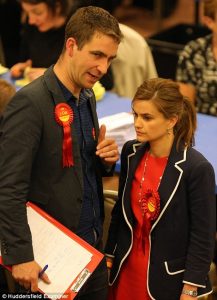 Also in his impact statement, Brendan Cox said such was the wildness of the place, that it caused bemusement in the family of the couple who “had to hike… in their wedding gear”. Well, if there was a picture of Jo Cox’s parent, for instance, doing exactly this sort of thing, then we could be the judge of this account. And frankly, even that there are any images at all that evoke the sense of a wedding having taken place, so what? Swap “here is my houseboat” with “here is my wedding”, reader, and all any of it amounts to is a thoroughly prepared back-story. Indeed, if there is one image that is most instructive about the relationship between the Coxes, it is one that was taken of them at an election count – which must be the one in which she would be elected – and they look like the handled and the handler.
Also in his impact statement, Brendan Cox said such was the wildness of the place, that it caused bemusement in the family of the couple who “had to hike… in their wedding gear”. Well, if there was a picture of Jo Cox’s parent, for instance, doing exactly this sort of thing, then we could be the judge of this account. And frankly, even that there are any images at all that evoke the sense of a wedding having taken place, so what? Swap “here is my houseboat” with “here is my wedding”, reader, and all any of it amounts to is a thoroughly prepared back-story. Indeed, if there is one image that is most instructive about the relationship between the Coxes, it is one that was taken of them at an election count – which must be the one in which she would be elected – and they look like the handled and the handler.
Finally, there is the odd case to recount about the Wikipedia page on Jo Cox that up until 22nd June, 2017, didn’t account for dates of the marriage to Brendan Cox. It was a thing noticed by the author when he was preparing material for the second part in this series (in which there is the remark “the editor of the Jo Cox Wikipedia entry does not appear to know when… [the wedding] occurred”). In the edit history of the page, the person who made the changes notes “adding dates of marriage and children’s births”. The “personal life” entry – or the relevant part of it – that the author captured on the 22nd January, 2017, looked like this:
Cox was married to Brendan Cox, an adviser on international development to Gordon Brown during Brown’s premiership, whom she met was working for Oxfam.
After the edit – as it currently stands, that is – it looks like this:
Cox was married to Brendan Cox, an adviser on international development to Gordon Brown during Brown’s premiership, whom she met while she was working for Oxfam, from June 2009 until her death in June 2016.
If we think that this is telling us that Jo Cox was married in June 2009, then the little summary panel on this particular page – the sort of panel that Wikipedia pages have on their right hand sides – confirms it “Spouse(s) Brendan Cox (m.2009)”.
Fascinatingly, the source for the date is cited as being Brendan Cox’s book, “Jo Cox: More in common”, which was published on 13th June 2017 (according to its Amazon listing). One might conclude, then, that the information was somehow just not available until Cox made it so,† which is indeed fascinating.
It was said above that the “being dead” aspect of Jo Cox needn’t be an attribute shared by Helen Leadbeater, and the same goes for “being married”, and every element of a life, or a portrayal of a life, that it represents – although of those elements of Jo Cox’s life, we’ve only briefly got in to the “living on a houseboat” one – and maybe it’s the only one that we would be able to look at. The importance of doing so is to understand the possibility, in this case, that there has been the application of the extended Comrade Ogilvy method for a psychological operation (to use our own terminology), where the fictional character of Jo Cox has been projected onto the person of Helen Leadbeater. And as far as that goes, the reader is still free (just) to have his own ideas.
This series will continue with the next episode looking at the way that Jo Cox was inserted into the role of the red dress-wearing, tied-to-the-stake offering that would literally “dragonise” the vast section of the population that was meant to be seen, and feel itself to be collectively culpable.
† For the sake of the information, and knowing about it, Cox appears to have been the source of the wedding images. In October 2016, the Andrew Marr show tweeted: “Our thanks to @MrBrendanCox for talking to @MarrShow and giving us this picture of Jo on their wedding day”. The Daily Mail, which covered the “story” of Cox speaking to Andrew Marr, placed the following caption under the image referred to:
Brendan Cox published a picture of Jo Cox on her wedding day as he spoke about the ‘shock and disbelief’ he still feels over her tragic death.
The image with the women holding Jo Cox was published at the website for Global Business Coalition for Education, and an article about the Executive Chair of GBC-Education, Sarah Brown, and was published with this caption:
Jo Cox, MP, celebrating her marriage with some of the many women who love and continue to be inspired by her (Approval for use of the photo provided by Jo’s husband)
‡ Brendan Cox has two children. The boat is evidently his, and evidently at some point navigated down from Oxford. In a 2003 lifestyle article in The Independent, now apparently not available on the internet, there is an interview with Brendan Cox, press officer for Oxfam. As it does seem to have gone into the memory hole, the article is reproduced in part here. The full version went on to report the advice of the financial planners:
Wealth Check: Living on a boat can be a good life but one man wants to know how he can stay afloat
Brendan Cox is having a great time messing about on the river, or the canal, depending on where he chooses to tie up his narrowboat. The 24-year-old bought it four months ago when he moved from London to Oxford.
“I couldn’t afford to buy a house and I wanted to make an investment,” he says. “Come winter, I’m going to sort out rudimentary central heating, because it could be a bit chilly.”
Mr Cox is a press officer for Oxfam, and most of his time is spent on the Conflict campaign. He bought the narrowboat with his savings and a £21,000 loan from his parents. He is making improvements to it, and hopes to sell it when he is ready to buy a house.
Mr Cox has £7,000 in student loans from his time as an under- graduate at the London School of Economics. On the savings side he has £300 in a Co-op Isa and Co-op savings account. “I’d like to know what I should do with my savings. I don’t want to invest in shares.”
Mr Cox paid into a Drug-scope pension scheme for two years when he worked for the charity. He has not joined the Oxfam pension scheme. We put his case to Danny Smith, consultant at Towry Law, in Bracknell, Berkshire, Julian Warden, financial planner at Baigrie Davies in London, Trefor Owen-Jones, independent financial adviser at Buckles Investment Services in Rhyl, Wales, and Nick Breton, spokesperson for The MarketPlace in London.
The previous parts:
Jo Cox Incident Periphery; Part Two: The BNP As Cointelpro Shooting Gallery (link)
Jo Cox Incident Periphery; Part One: The Fellowship Of The “Sting” (link)




